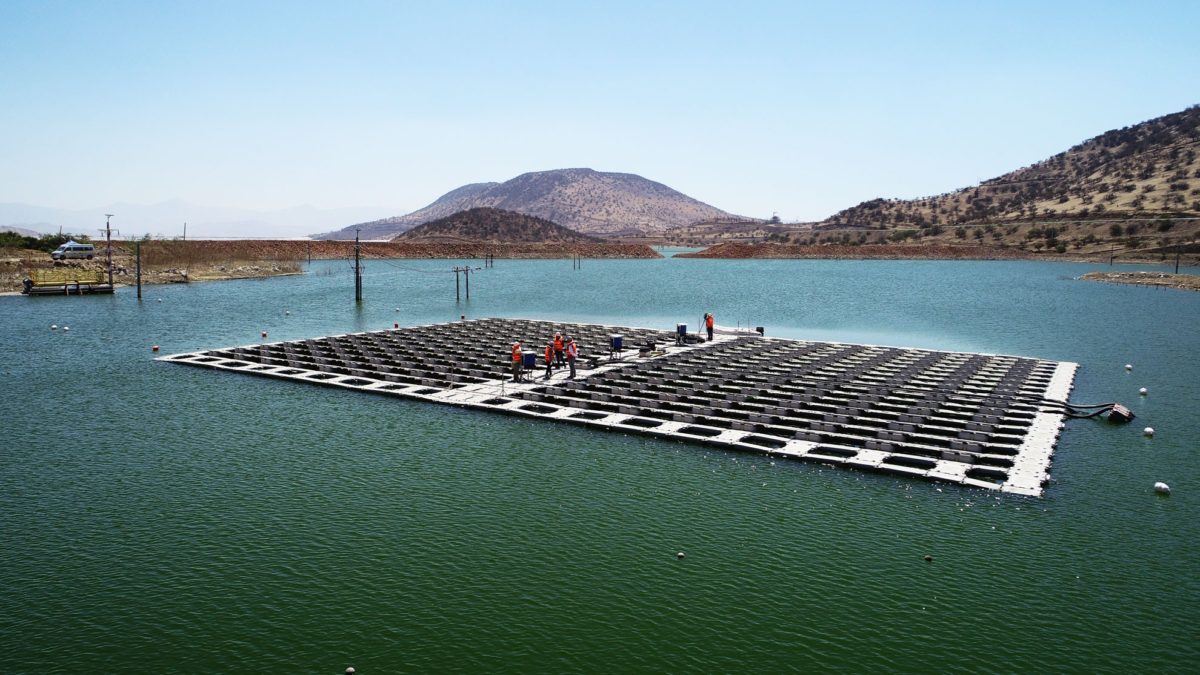French floating PV specialist Ciel&Terre and Chilean integrator Lenergie have jointly deployed a floating PV array at a copper mine owned by multinational mining company Anglo American.
Ciel&Terre and Lenergie said they have installed an 84 kW array at a tailings pond at the Los Bronces mine, which holds one of the largest copper reserves in Chile. They added that the project was supported by the Ministry of Mining, the National Geology and Mining Service (Sernageomin) and the Ministry of Energy, without specifying the kind of support that was provided.
The solar system is expected to generate up to 153 MWh of electricity per year to cover part of the site's energy needs, while also helping to reduce water evaporation at the pond. According to Ciel&Terre, Chile is known for severe water evaporation, which is a factor that can complicate mining processes.
The Chilean Minister for Mines, Baldo Prokurica, said he hopes that more mining companies will follow the example of Anglo American: “As a minister, I feel much concerned by the tailings dam issue, obviously for safety reasons and for reconversion, but also to optimize the use of these water bodies in mining areas.” Sernageomin, which operates under the ministry, released a report last year that identified about 740 tailings ponds or dams throughout the country as potential locations for floating PV projects.
The plant at the Les Bronces mine is the first operational floating project in Chile and Spanish-speaking Latin America. The region's largest operational floating PV system is a 1 MW installation built by power producer Companhia Hidroelétrica do São Francisco (Chesf) at a 175 MW hydroelectric dam in Sobradinho, in the Brazilian state of Bahia.
South America has the potential to deploy 36 GW of floating solar, according to a recent report from the World Bank. The Where Sun Meets Water report also revealed that the global cumulative installed capacity of floating PV plants was 1.1 GW by the end of September 2018.
According to another recent study by Christian Breyer — professor of solar economy at Finland’s Lappeenranta University of Technology — a hydropower plant at a reservoir can function as a virtual charge during daytime, by accumulating water for power production when there is no sunlight.
This content is protected by copyright and may not be reused. If you want to cooperate with us and would like to reuse some of our content, please contact: editors@pv-magazine.com.




By submitting this form you agree to pv magazine using your data for the purposes of publishing your comment.
Your personal data will only be disclosed or otherwise transmitted to third parties for the purposes of spam filtering or if this is necessary for technical maintenance of the website. Any other transfer to third parties will not take place unless this is justified on the basis of applicable data protection regulations or if pv magazine is legally obliged to do so.
You may revoke this consent at any time with effect for the future, in which case your personal data will be deleted immediately. Otherwise, your data will be deleted if pv magazine has processed your request or the purpose of data storage is fulfilled.
Further information on data privacy can be found in our Data Protection Policy.